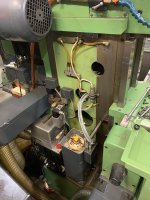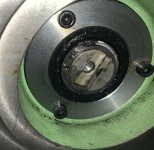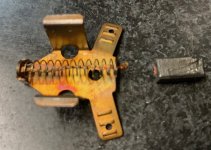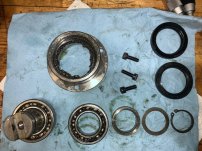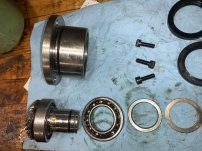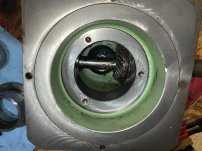rimcanyon
Diamond
- Joined
- Sep 28, 2002
- Location
- Salinas, CA USA
I have been having a problem using G0 to move my table up (Z-) on my FP2NC for a few years now. If I dial back the speed to 50% no problem, but at full speed the machine shudders and faults if I do a Z- move of 75mm. I cleaned the tachs and recently adjusted the Bosch cards drift and tach settings after upgrading to D4. The behavior was the same when the machine was running on D2. What else to check?


